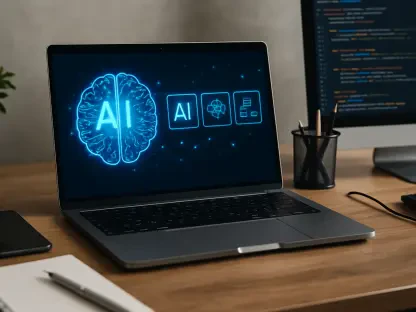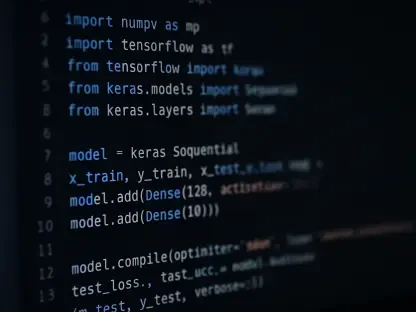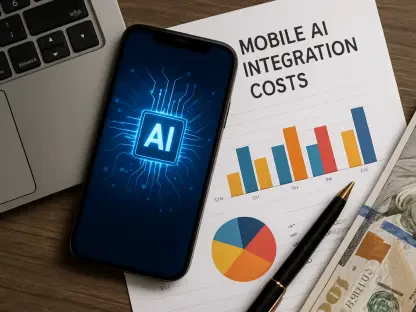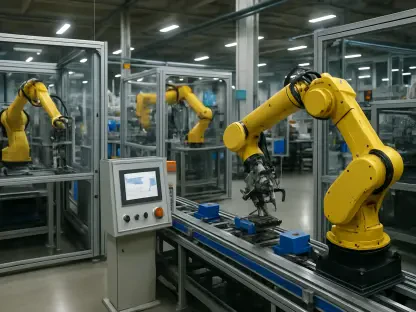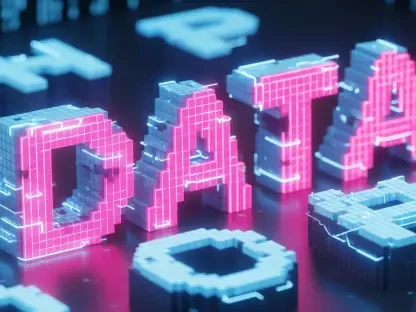In an era where technology evolves at breakneck speed, a staggering statistic reveals the transformative power of artificial intelligence in coding: over 60% of developers now rely on AI tools to assist with software creation, highlighting the rise of AI-driven code generation. This groundbreaking approach allows even non-technical individuals to craft functional applications through simple prompts or intent. The implications are profound, promising to reshape the landscape of software development by accelerating innovation and broadening access. This review delves into the core features, real-world impact, and inherent challenges of this technology, offering a comprehensive look at its current state and future potential.
Core Features and Technical Innovations
Interpreting User Intent for Code Creation
AI-driven code generation hinges on its ability to translate human intent into executable code, a process powered by advanced natural language processing and machine learning models. These systems analyze vague or non-technical user inputs, such as a request to “build a simple app for tracking tasks,” and produce functional software snippets. The significance lies in democratizing development, as individuals without programming expertise can now contribute to digital solutions, expanding the pool of innovators in the tech ecosystem.
This technology’s performance in handling diverse prompts is noteworthy, often generating usable code even from ambiguous instructions. However, the accuracy depends heavily on the training data and model sophistication, sometimes leading to outputs that require refinement. The accessibility it provides is undeniable, breaking down traditional barriers and enabling hobbyists and professionals alike to experiment with software creation in ways previously unimaginable.
Speed and Efficiency in Development
One of the standout attributes of AI code generation tools is their capacity for rapid prototyping, slashing development timelines significantly compared to manual coding. Tasks that once took days or weeks can now be completed in mere hours, allowing developers to iterate quickly on ideas. This efficiency is particularly valuable in fast-paced environments like startups, where speed to market often determines success.
Real-world scenarios underscore this advantage, such as small teams using AI to build minimum viable products for investor pitches. Yet, this speed comes with trade-offs, as hastily generated code may harbor quality issues or security flaws if not thoroughly reviewed. Balancing the rush of development with rigorous validation remains a critical consideration for users leveraging these tools.
Industry Trends and Adoption Patterns
Rapid Growth and Integration
The adoption of AI-driven code generation has skyrocketed across industries, with organizations increasingly integrating more advanced AI models into their workflows. From tech giants to small enterprises, the technology is becoming a staple for enhancing productivity and fostering innovation. This widespread embrace reflects a broader trend of relying on automation to streamline complex processes in software engineering.
Recent data paints a vivid picture of this expansion, showing a notable uptick in usage over the past year, alongside a growing ecosystem of tools tailored for various development needs. However, this growth is accompanied by a parallel rise in challenges, as the rush to implement often outpaces the establishment of best practices. The industry is at a pivotal moment, navigating the benefits of scale while grappling with emerging risks.
Evolving Risks in the Landscape
Alongside adoption, security concerns have surged, with reports indicating a 210% increase in AI-related vulnerability incidents and a 540% spike in prompt injection attacks since tracking began in recent years. These figures highlight the dual nature of progress, where innovation opens new doors but also exposes new threats. The complexity of managing these risks is compounded by the sheer volume of AI-generated outputs entering production environments.
A shift toward community-driven validation is emerging as a response, with developers and organizations collaborating to scrutinize and improve AI outputs. This collective approach aims to address vulnerabilities through shared knowledge and peer review, signaling a move toward more responsible integration. The trend underscores the need for vigilance as the technology continues to permeate diverse sectors.
Practical Applications Across Sectors
Empowering Small Businesses and Individuals
AI-driven code generation is making significant inroads in small and medium-sized enterprises, where resources for traditional development are often limited. These businesses can now create custom tools or applications to streamline operations without hiring specialized developers. The technology levels the playing field, allowing smaller players to compete with larger counterparts through accessible innovation.
For individual creators and hobbyists, the impact is equally transformative, enabling personal projects like custom websites or niche apps to come to life with minimal technical know-how. Educational settings also benefit, as students and educators use these tools to teach and learn coding concepts interactively. Such applications illustrate the technology’s role in fostering creativity across varied contexts.
Driving Innovation in Tech Startups
In the competitive realm of tech startups, AI code generation serves as a catalyst for rapid prototyping and ideation. Teams can quickly test concepts, build demos, and refine products based on real-time feedback, all while conserving time and budget. This agility often proves critical in securing funding or gaining early user traction in crowded markets.
Unique implementations further showcase versatility, such as non-technical founders using AI to develop initial versions of their vision before engaging professional coders. The ripple effect is a more inclusive startup ecosystem, where diverse perspectives shape technological advancements. This democratization of tools fuels a wave of experimentation previously constrained by skill gaps.
Challenges and Security Concerns
Vulnerabilities in Generated Code
Despite its promise, AI-driven code generation faces substantial hurdles, particularly around security. Common issues include vulnerabilities like SQL injection from poorly constructed queries, missing input validation, and hardcoded sensitive data within the code. These flaws often stem from the AI’s prioritization of functionality over secure design, replicating unsafe patterns from its training datasets.
The scale of the problem is alarming, with studies suggesting that a significant portion of AI-generated code contains known security weaknesses. This reality poses risks, especially in environments where code is deployed without thorough vetting. Addressing these inherent flaws demands a shift in how the technology is designed and applied, emphasizing safety from the outset.
Emerging Threats and Oversight Gaps
Beyond basic vulnerabilities, new threats like “vibe hacking” are gaining traction, where malicious tools exploit AI to craft sophisticated attacks with ease. Autonomous hackbots add another layer of concern, capable of scanning for weaknesses and generating exploits independently. Such developments lower the barrier for cybercrime, amplifying the potential for widespread harm.
Compounding these risks is the erosion of traditional review processes, particularly in non-professional settings where speed often trumps caution. Unverified or “hallucinated” code—outputs that seem correct but harbor hidden issues—can slip into use, creating unseen liabilities. Strengthening oversight and establishing governance frameworks are essential steps to mitigate these growing dangers.
Looking Ahead: Potential and Precautions
Advancements on the Horizon
The trajectory of AI-driven code generation points toward significant improvements in secure coding practices and model robustness. Future iterations are expected to incorporate real-time threat modeling, identifying risks as code is generated. Such advancements could redefine safety standards, ensuring that innovation does not come at the expense of security over the coming years.
Additionally, enhanced human-in-the-loop oversight is likely to play a larger role, blending AI efficiency with human judgment to catch errors early. These potential breakthroughs aim to strike a balance, preserving the speed of development while fortifying defenses. The industry stands poised for a wave of refinements that could address many current shortcomings.
Long-Term Implications for Development
As this technology matures, its impact on software development roles and cybersecurity paradigms will likely be profound. Traditional coding positions may evolve into hybrid roles focused on AI collaboration and validation rather than manual creation. Simultaneously, cybersecurity will need to adapt to continuous mitigation strategies to counter AI-enabled threats at scale.
Speculation on broader effects suggests a redefinition of how software is conceptualized, with diverse contributors shaping solutions through accessible tools. Yet, this future hinges on the ability to embed security as a core principle. The coming years will test the industry’s capacity to align rapid progress with responsible practices.
Final Reflections and Next Steps
Looking back, this exploration of AI-driven code generation revealed a technology that stands as both a beacon of accessibility and a source of caution. Its ability to empower non-developers and accelerate prototyping marks a significant leap forward in software creation. Yet, the persistent security vulnerabilities and emerging threats underscore a critical need for balance.
Moving forward, stakeholders must prioritize a secure-by-design mindset, embedding threat modeling and robust oversight into every stage of development. Collaborative efforts, such as community validation and bug bounty programs, should be scaled to stress-test AI outputs under real-world conditions. Additionally, establishing clear governance frameworks will be vital to manage usage and protect sensitive data. By aligning innovation with these protective measures, the software industry can harness the full potential of AI code generation while safeguarding its ecosystem for sustained progress.


